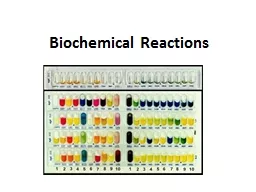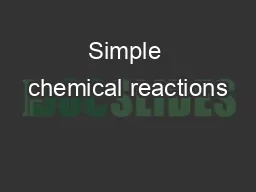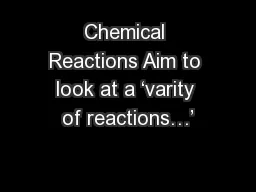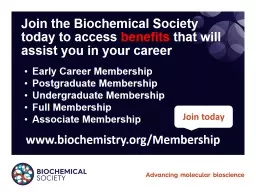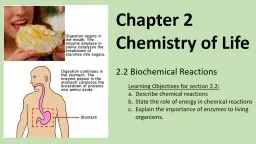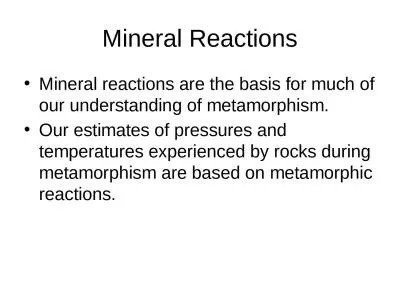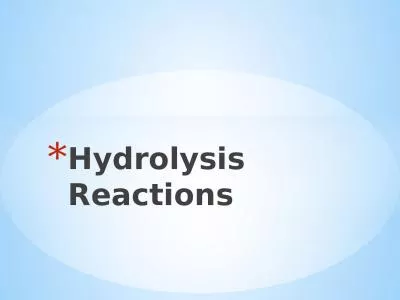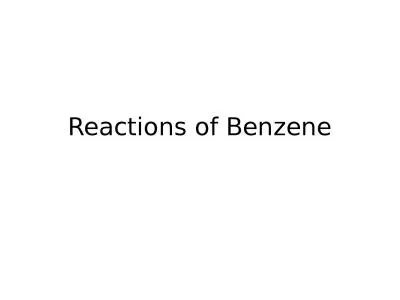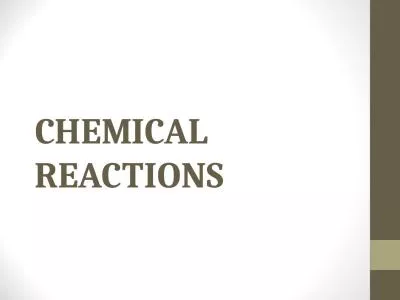PPT-Biochemical Reactions
Author : faustina-dinatale | Published Date : 2017-07-14
Catalase Test Principle If organisms have catalase enzyme they will hydrolyze hydrogen peroxide substrate leading to production of oxygen end product 2H 2
Presentation Embed Code
Download Presentation
Download Presentation The PPT/PDF document "Biochemical Reactions" is the property of its rightful owner. Permission is granted to download and print the materials on this website for personal, non-commercial use only, and to display it on your personal computer provided you do not modify the materials and that you retain all copyright notices contained in the materials. By downloading content from our website, you accept the terms of this agreement.
Biochemical Reactions: Transcript
Download Rules Of Document
"Biochemical Reactions"The content belongs to its owner. You may download and print it for personal use, without modification, and keep all copyright notices. By downloading, you agree to these terms.
Related Documents

